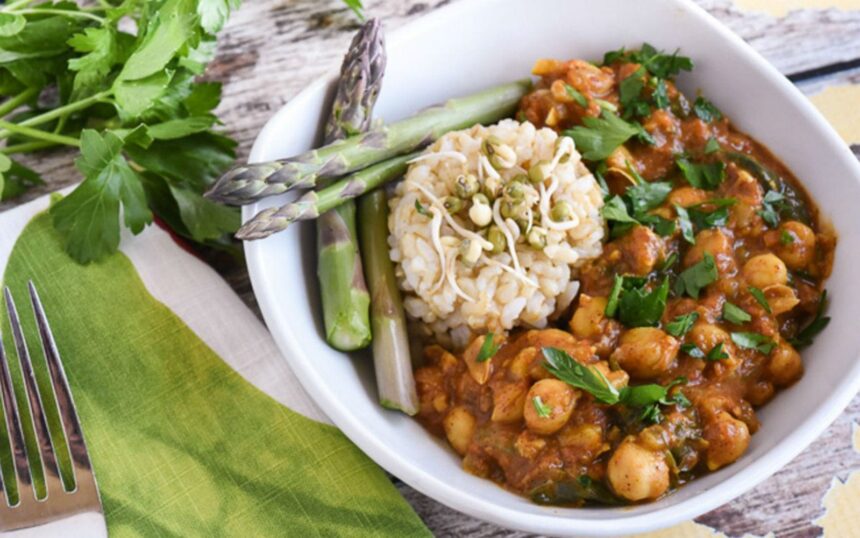Even though Indian cuisine differs from region to region, Indian gastronomy is known at large for certain trademark staples that form the backbone of its culinary culture. There are the silky sauces, the fragrant spices, and the various kinds of bread and relishes that combine to create dynamic flavor profiles which appeal to nearly all five of our senses.
For many vegetarians, Indian restaurants stand out among the often times meat-heavy restaurant options. The good news is, Indian restaurants tend to be extremely vegan-friendly, so those looking for a flavorful plant-based meal need not miss out on enjoying a satisfying meal when dining out. But even though that Indian restaurant down the street has the potential to become your new go-to favorite, it’s important to be aware of a few things before you order the first vegetarian menu option you find.
Here are a few tips to help you make sure you’re ordering a meal that meets both your dietary and your taste preferences, too:
Watch Out For Ghee
For those who don’t know, butter is actually made of three components: butterfat, milk solids, and water. When you heat up butter over medium-low heat until it’s simmering, the water in the butter will slowly evaporate, leaving you with the milk solids and the fat. If you take all those remaining components and pour the mixture through a cheesecloth to remove the milk solids, you’ll be left with the pure butterfat, aka, ghee.
Ghee is one of the most ubiquitous ingredients in Indian cooking, in part because it doesn’t spoil easily. To be on the safe side, always inquire as to whether or not the dish you’re ordering from an Indian restaurant is made with ghee, and if it is, ask them to substitute a vegetable oil instead (although in some cases, the oil will already be peanut or safflower oil, so you’re in the clear). Most restaurants will be happy to honor your request.
…And Naan
While there are plenty of vegan recipes for Naan, a leavened white bread that’s found at pretty much every Indian restaurant out there, if you’re dining out, the naan is likely to have been made with yogurt. If you’re someone who craves bread with their meal, however, don’t despair: most, if not all, Indian restaurants serve vegan-friendly Roti, an unleavened whole wheat bread, and Puri, a deep-fried, puffed whole-wheat bread.
Vegan-Friendly Indian Options at a Glance
For appetizers, vegetable samosas and vegetable pakoras are vegan. Additionally, onion, cauliflower, and okra bhajis, which are spicy fried Indian snacks comparable to fritters, are viable options.
For bread, roti, puri, paratha, poppadom/papadum (a thin, crisp, disc-shaped cracker-like food), and chapatti are all traditionally vegan (although some restaurants do brush their chapatti with butter, so make sure to clarify you want it without). Poppadom is often served with a variety of chutneys and sauces. Most of these are vegan-friendly, although forgo dipping your poppadom in raita, a yogurt-based sauce.
For sides and entrées, look for the following words: saag, which means spinach or leafy greens-based, aloo, which means potato, dal, which means lentils, and chana, which means chickpeas. Most dishes with these words are veggie-based and easy vegan options. Steer clear of anything that contains the word “paneer” — that’s a fresh cheese.
For the Most Antioxidants, Order Dishes With These Common Spices
Indian cuisine is known for its liberal use of spices and herbs, such as ginger, turmeric, and cinnamon, as well as its
Cinnamon has anti-inflammatory properties, and has proven antibacterial and antifungal properties; check out this recipe for Cinnamon-Spiced Chana Masala for an idea of how it can be incorporated in vegan cooking.
Ginger is highly medicinal, known to combat stomach ailments of all kinds and has anti-inflammatory properties. You’ll find this special spice popping up a lot in different curries and entrées, like in this Methi Gobi: Indian Cauliflower With Ginger and Fenugreek.
Turmeric is a gorgeous spice that contains curcumin, which has been found to be comparable in efficacy to over-the-counter and prescription anti-inflammatory agents without the toxic side effects. Check out how vibrant it makes the rice look in this Easy Vegetable Curry dish.
Many Indian dishes also follow the principles of Ayurvedic nutrition, which you can learn more about here.
Looking to Up Your Protein Intake? Order These Meals
If you want to consume a high-protein Indian meal, you’re going to want to order something that contains either dal, rajma, or chana, which translates to lentils, kidney beans, and chickpeas respectively (you don’t want to miss this 15 Minute Chickpea and Spinach Curry — it’s one of our Food Monster App‘s most popular recipes!).
Lentils contain 18 grams of protein in just one cup, so options like the Northern India Masoor Dal or this Sweet Potato and Tomato Red Lentil Dal are flavorful, good choices for protein lovers.
Kidney beans have nutrients that provide significant protection against heart disease and 15 grams of protein per cooked cup. This recipe for Rajmah – Indian Red Beans will convince you to fall in love with them.
Cut Back on Fat With These Tips
If you’re looking to minimize your fat intake, we suggest skipping on the pakoras and samosas and puri; while delicious, all of those options are either traditionally served fried or deep-fried, so you’re better off sticking to a salad or veggie-based soup instead.
Additionally, many Indian curries use coconut milk to achieve a rich depth of flavor and mouth-feel; if you’re watching your fat intake, stick to something like Baingan Bharta, an eggplant- and tomato-based stew, instead.
Finally, order tandoori. Tandoori is a style of food named for the Tandoor, an Indian clay oven, that it is cooked in. If you order vegetable tandoori (and clarify you want it dairy and ghee-free), you’re ordering marinated vegetables that are skewered and then cooked in the oven, which means no extra oil! Check out this recipe for Tandoori Tofu for an idea, or this recipe for Tandoor Aloo: Marinated New Potatoes.
Learn How to Cook Plant-Based Meals at Home
Reducing your meat intake and incorporating more plant-based foods into your diet is known to Support various health benefits, including reducing chronic inflammation, improving heart health, enhancing mental well-being, achieving fitness goals, meeting nutritional needs, managing allergies, and promoting gut health, among others. Dairy consumption also has been linked to many health problems, including acne, hormonal imbalance, cancer, prostate cancer, and has many side effects.
For those of you interested in eating more plant-based, we highly recommend grabbing our favorite plant-based cookbooks and downloading the Food Monster App — with over 20,000 delicious recipes, it is the largest plant-based recipe resource to help reduce your environmental footprint, save animals, and get healthy! And, while you are at it, we encourage you to also learn about the environmental and health benefits of a plant-based diet.
Here are some great resources to get you started:
For more Animal, Earth, Life, Vegan Food, Health, and Recipe content published daily, subscribe to the One Green Planet Newsletter! Lastly, being publicly funded gives us a greater chance to continue providing you with high-quality content. Please consider supporting us by donating!



![Baked Sweet Potato and Coconut Pudding [Vegan] – One Green Planet](https://top-100-recipes.com/wp-content/uploads/2025/10/sweet-potato-pudding5-150x150.jpg)





